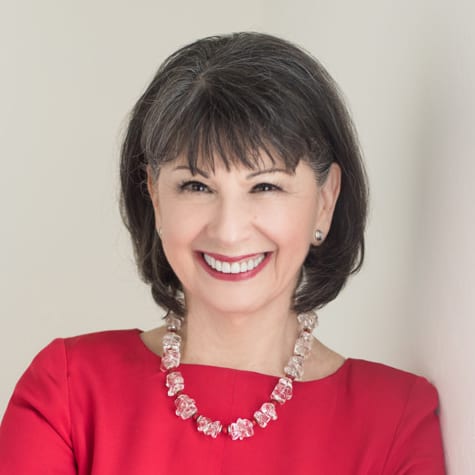A Vision, a Goal, some Mustard: Women’s Leadership @ ASU
Somebody once gave me a greeting card that read, “Just when you think you are done, you are really just beginning.” That is certainly my story with Take The Lead which I co-founded with my wonderful partner-in-good Amy Litzenberger. So when the question came up about how I came to be teaching this online certificate course, “9 Practical Leadership Power Tools to Advance Your Career,” I took a little trip down memory lane to recall why I became an advocate for women’s leadership parity and how I learned what makes a successful movement to achieve that–or anything else you want to make happen.
When I was 15, I had my first lesson in the power of working together to make systemic change.
I attended high school in Stamford, a small Texas town with only two places teens could gather for hamburgers and hanging out. One, Son’s City Pig had indoor space where we went to chat and listen to music. The other, the Superdog, had no indoor seating.
The owner of Son’s started charging us two cents extra for those little white paper containers of mustard. We were outraged by this injustice, but it wasn’t till a boy named Ralph challenged us to action that we realized we could do something about it.
“Let’s go over to the Superdog and ask the owner, Mr. Jackson, to build a room where we could hang out. And if he won’t charge us extra for mustard, we’ll take all our business to him.”
About 20 kids piled into three battered cars and drove the two minutes across town. Ralph went to get Mr. Jackson, who looked a tad frightened at first but soon recognized a lucrative proposition.
He built that room, we took our business to him, and he thrived even without the extra mustard revenue.
Injustice rectified.
That process, or some variation on it is the very one that created almost every sustainable social change I know of:
- A compelling vision with a well-defined goal;
- A worthy mission bigger than oneself, that rectifies an injustice or creates an innovation that meets people’s real needs;
- The courage to act upon convictions, to confront issues even if they are uncomfortable, and to assert your worth – even if it’s just a bunch of kids buying burgers;
- A constituency—people who share your concerns and will mobilize;
- A plan to achieve the goal and the will to stay with the plan till it’s accomplished.
There was just one thing wrong with the story of the mustard-liberation movement: its leaders were all male. Ralph, the two restaurant owners, even the drivers of the cars. The girls were present in the background. It was, after all, 1957.
Now, women are half the workplace and 57 percent of college graduates; they buy 85 percent of consumer goods and there is ample evidence that companies that have more women in their top leadership ranks earn more money.
Although movement building for systems change helped rework laws and open doors 40 years ago, women have been stalled at under 20 percent of the top positions across all sectors for almost two decades.
ASU is involved with an exciting new movement to ensure more women are able to take their places in the ranks of leadership positions worldwide, recently partnering withTake The Lead, an organization I co-founded, whose mission is to prepare, develop, inspire, and propel women to take their fair and equal share of leadership positions across all sectors by 2025.
One of the first visible manifestations of this partnership is the launch of ASU’s first online women’s leadership certificate course. It starts Oct. 2 and runs for six weeks. It’s asynchronous, so participants can view lectures and participate in conversations at times that fit the busy schedules of working women who are or aspire to be leaders. In the course, we’ll apply those five principles of changemaking, because it’s time for women to have an equal place at life’s table and this is the moment when we can do it.
I’m particularly grateful to ASU President Michael Crow for deeming Take The Lead’s work a university wide initiative and to W. P. Carey School of Business Dean Amy Hillman, who serves on our board. Those interested in women’s leadership issues will also want to mark their calendar for Feb. 19, 2014, and join us at ASU Gammage for the Take The Lead Challenge, a national launch event for our initiative. It will feature speakers such as Sheryl Sandberg, author of “Lean In,” and a surprise challenge that does not involve mustard.
Want to be part of this exciting vision? Contact me.
This article was originally posted in the ASU Magazine.

GLORIA FELDT is the New York Times bestselling author of several books including No Excuses: 9 Ways Women Can Change How We Think About Power, a sought-after speaker and frequent contributor to major news outlets, and the Co-Founder and President of Take The Lead. People has called her “the voice of experience,” and among the many honors she has been given, Vanity Fair called her one of America’s “Top 200 Women Legends, Leaders, and Trailblazers,” and Glamour chose her as a “Woman of the Year.”
As co-founder and president of Take The Lead, a leading women’s leadership nonprofit, her mission is to achieve gender parity by 2025 through innovative training programs, workshops, a groundbreaking 50 Women Can Change The World immersive, online courses, a free weekly newsletter, and events including a monthly Virtual Happy Hour program and a Take The Lead Day symposium that reached over 400,000 women globally in 2017.

